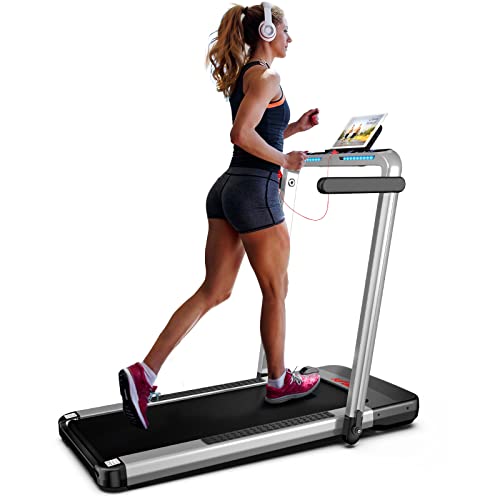
Treadmill Brands
Add a review FollowOverview
-
Founded Date Juli 8, 1997
-
Posted Jobs 0
-
Viewed 125
Company Description
What To Do To Determine If You’re Set To Go After Walking Machine

The Walking Machine: A Comprehensive Guide to Your Fitness Companion
In today’s busy world, where time is a high-end, preserving a consistent workout regimen can be a difficulty. For many, a walking machine– commonly referred to as a treadmill– acts as a perfect fitness companion. This short article offers an in-depth take a look at walking machines, including their benefits, types, maintenance tips, and frequently asked concerns.
Why Choose a Walking Machine?
Walking machines use a practical and reliable way to include cardiovascular workout into day-to-day life. Here are numerous essential advantages:

- Convenience: Walking machines allow individuals to exercise anytime, no matter weather condition conditions or time restrictions. They are perfect for hectic schedules.
- Versatility: Users can stroll, jog, or perform at their own rate and intensity.
- Security: Walking machines present a lower danger of injury compared to outdoor walking or running, specifically for novices or those recuperating from injuries.
- Tracking Progress: Many treadmills come with integrated screens that track metrics like speed, range, and calories burned.
Types of Walking Machines
When considering a walking machine, it’s important to pick the right type based on private physical fitness objectives and space restrictions. Below are the main types of walking machines:
| Type | Description |
|---|---|
| Manual Treadmills | These machines do not have a motor, and users require to stroll or run to rotate the belt. |
| Electric treadmills For cheap | Powered by an electric motor, allowing users to set the speed and slope easily. |
| Folding Treadmills | Created for easy storage, these treadmills can be folded when not in use. |
| Desk Treadmills | Ideal for a double work and workout environment, these compact machines allow walking while working. |
| Incline Trainers | These permit users to mimic uphill walking, improving workout strength and calorie burn. |
Selecting the Right Walking Machine
Choosing the best walking machine can considerably affect motivation and efficiency. Here are some aspects to think about:
Key Features to Look For
- Motor Power: An effective motor ensures a smooth and constant workout. For periodic walkers, a 1.5 HP motor is typically adequate; for much heavier usage, look for 3.0 HP and above.
- Belt Size: A larger and longer belt offers more space for a comfortable stride. Requirement sizes range from 16 inches broad and 50 inches long.
- Incline Options: Adjustable incline settings can simulate walking or running uphill, increasing the strength of the workout.
- Shock Absorption: Good shock absorption decreases the risk of joint injuries and enhances comfort.
- Console Features: Look for integrated exercises, heart rate monitors, and connectivity functions like Bluetooth for a more engaging experience.
Budget plan Considerations
Walking machines been available in a wide variety of rates, depending upon features and building and construction quality. Here’s a rough budget breakdown:
| Price Range | Features |
|---|---|
| Under ₤ 300 | Standard handbook or small electric treadmills with limited functions. |
| ₤ 300 – ₤ 700 | More innovative electric treadmills with incline, medium power motors, and much better warranties. |
| ₤ 700 – ₤ 1500 | High-quality electric treadmills with larger built-in displays, substantial features, and guarantees. |
| ₤ 1500 and above | High-end models using sophisticated innovation, functions, and long lasting building and construction for major fitness lovers. |
Maintenance Tips for Your Walking Machine
To guarantee durability and optimum performance of a walking machine, consider the following maintenance ideas:
- Regular Cleaning: Dust and sweat can accumulate on the machine and the belt. Wipe down the surfaces and clean the belt regularly.
- Lubrication: Depending on the model, oiling the running belt occasionally can prevent wear and tear. Examine the manufacturer standards for advised lubrication schedules.
- Examination: Periodically examine the machine for loose screws or worn parts. Tighten up and replace as required.
- Calibration: Occasionally, inspect the calibration of your machine’s metrics to ensure they offer accurate information.
- Proper Use: Follow the maker’s suggestions for weight limitations and functional standards.
Frequently Asked Questions About Walking Machines
1. Are walking machines a great exercise?
Yes, walking machines supply an excellent cardiovascular exercise, can assist with weight reduction, and improve general health.
2. How typically should I utilize a walking machine?
Goal for at least 150 minutes of moderate-intensity aerobic activity per week, which can quickly be achieved with regular sessions on a walking machine.
3. Can I drop weight on a walking machine?
Yes, including a walking machine regimen into a healthy diet plan can promote weight loss, especially if integrated with intervals and incline training.
4. Is it safe for seniors to use a walking machine?
Yes, walking machines can be safe for elders with low-impact settings and safety functions like hand rails. Nevertheless, individuals must seek advice from with their healthcare service provider before beginning any workout program.
5. What’s the difference in between a treadmill and a walking machine?
The term “walking machine” usually refers to a treadmill planned for walking, while “treadmill” can describe machines used for numerous intensities, including running.
With their adaptability and convenience, walking machines can substantially enhance one’s physical fitness journey. By thoroughly selecting the right type, making sure appropriate upkeep, and including different workout methods, users can optimize their walking machine’s benefits. As with any workout regimen, consistency is key to accomplishing long lasting fitness results.